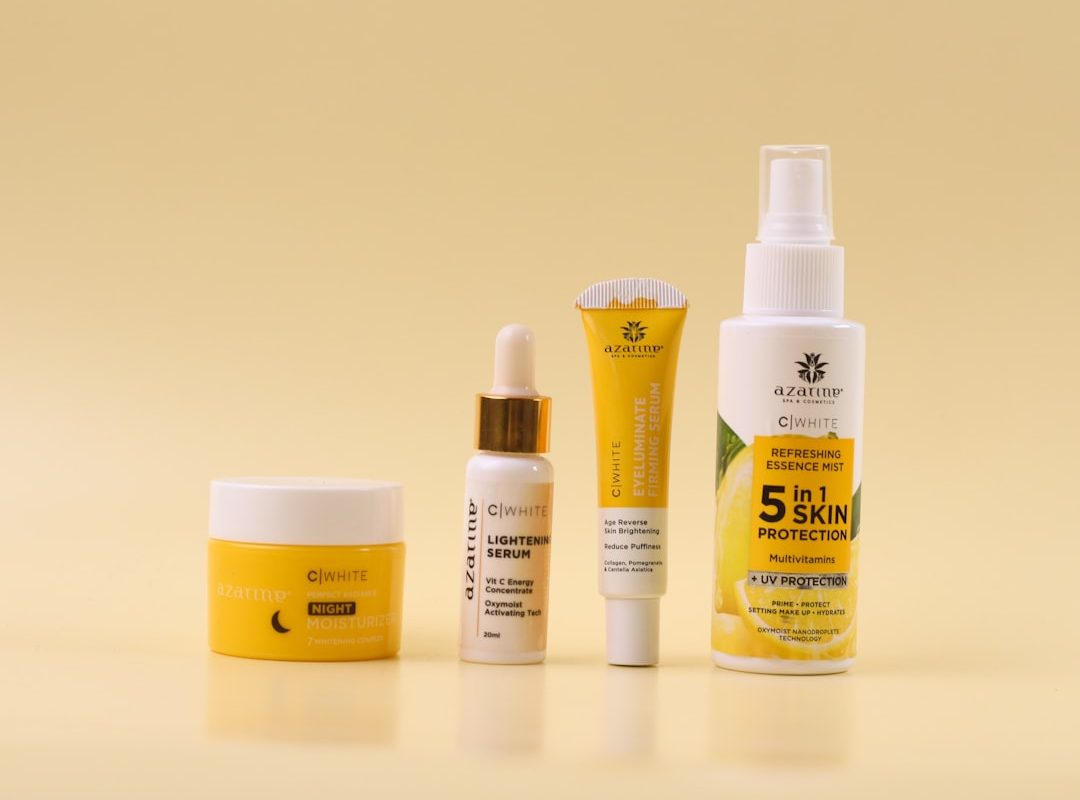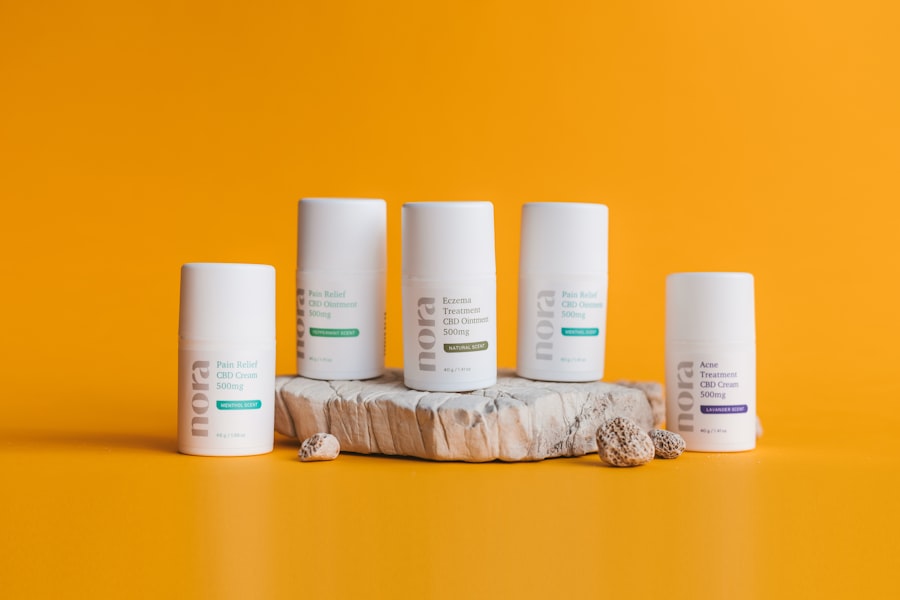In the quest for flawless skin, consumers often overlook the potential dangers lurking in their favorite skin care products. The beauty industry is rife with ingredients that, while effective in the short term, can pose significant long-term health risks. Many of these harmful substances are included in formulations to enhance texture, extend shelf life, or provide a pleasing scent.
However, as awareness grows regarding the impact of these chemicals on both health and the environment, it becomes increasingly important for consumers to educate themselves about what they are applying to their skin. The skin is the body’s largest organ and serves as a barrier against external elements. When harmful ingredients are absorbed through the skin, they can enter the bloodstream and potentially disrupt bodily functions.
This article delves into some of the most concerning ingredients found in skin care products, exploring their effects and offering insights into safer alternatives. By understanding these harmful components, consumers can make informed choices that prioritize their health and well-being.
Parabens: What They Are and Why They’re Harmful
The Concerns Surrounding Parabens
However, the very properties that make parabens appealing to manufacturers also raise significant concerns among health experts. Research has shown that parabens can mimic estrogen in the body, leading to hormonal imbalances that may contribute to reproductive issues and even certain types of cancer.
The Potential Dangers of Parabens
The potential dangers of parabens have prompted many consumers to seek out paraben-free products. Studies have detected parabens in human breast tissue, raising alarms about their possible link to breast cancer.
A Shift Towards Natural Preservatives
While regulatory agencies like the FDA maintain that parabens are safe in low concentrations, the cumulative exposure from multiple products can be concerning. As a result, many brands are reformulating their products to eliminate parabens altogether, opting for natural preservatives that do not carry the same risks.
Sulfates: The Dangers of Using Sulfates in Skin Care Products
Sulfates are surfactants commonly found in cleansers, shampoos, and body washes due to their ability to create lather and remove dirt and oil effectively. Sodium lauryl sulfate (SLS) and sodium laureth sulfate (SLES) are two of the most prevalent sulfates used in skin care formulations. While they may provide a satisfying foaming action, sulfates can strip the skin of its natural oils, leading to dryness, irritation, and even allergic reactions in sensitive individuals.
The harsh nature of sulfates can disrupt the skin’s natural barrier, making it more susceptible to environmental aggressors and exacerbating conditions like eczema and psoriasis. Furthermore, sulfates can cause eye irritation and may even contribute to long-term damage with prolonged use. As awareness of these adverse effects grows, many consumers are turning to sulfate-free alternatives that utilize gentler cleansing agents derived from natural sources.
These alternatives not only cleanse effectively but also help maintain the skin’s moisture balance.
Phthalates: Understanding the Risks of Phthalates in Skin Care
Phthalates are a group of chemicals used to increase flexibility and durability in plastics, but they also find their way into personal care products as solvents and fixatives for fragrances. Commonly found in lotions, perfumes, and hair sprays, phthalates have raised significant health concerns due to their endocrine-disrupting properties. Research indicates that exposure to phthalates may be linked to reproductive issues, developmental problems in children, and an increased risk of certain cancers.
The pervasive use of phthalates in consumer products has led to widespread exposure among the general population. Studies have shown that phthalates can be detected in urine samples from a large percentage of individuals, indicating that they are absorbed into the body through skin contact or inhalation. As a result, many brands are now opting for phthalate-free formulations, using natural fragrance components or essential oils instead.
This shift not only addresses health concerns but also appeals to consumers seeking cleaner, more sustainable beauty options.
Formaldehyde: Why You Should Avoid Products with Formaldehyde-Releasing Preservatives
Formaldehyde is a colorless gas with a strong odor that is commonly used as a preservative in various cosmetic products. While it is effective at preventing microbial growth, formaldehyde is classified as a human carcinogen by several health organizations, including the International Agency for Research on Cancer (IARC). The concern lies not only in direct exposure but also in the fact that some cosmetic ingredients release formaldehyde over time, posing a risk even after application.
Products containing formaldehyde-releasing preservatives such as quaternium-15 or DMDM hydantoin can lead to skin irritation and allergic reactions in sensitive individuals. Long-term exposure may increase the risk of developing respiratory issues or other serious health conditions. As consumers become more aware of these risks, many are actively seeking out formaldehyde-free products.
Brands are responding by reformulating their offerings with safer preservatives derived from natural sources that do not compromise product efficacy.
Synthetic Fragrances: The Hidden Dangers of Synthetic Fragrances in Skin Care
The Unseen Consequences of Synthetic Fragrances
Research has shown that synthetic fragrances can disrupt hormonal balance and may even contribute to respiratory issues when inhaled. Additionally, some synthetic fragrance compounds have been linked to skin irritation and contact dermatitis.
The Rise of Natural Alternatives
As a result, many consumers are opting for fragrance-free or naturally scented products made with essential oils or botanical extracts. These alternatives not only reduce the risk of adverse reactions but also promote a more holistic approach to skin care.
A Healthier Approach to Beauty
By choosing natural and fragrance-free products, consumers can take a proactive step towards protecting their health and well-being. This shift towards a more natural approach to beauty is not only better for our skin, but also for our overall health and the environment.
Mineral Oil: The Negative Effects of Using Mineral Oil on Your Skin
Mineral oil is a byproduct of petroleum refining and is commonly used in moisturizers and creams due to its occlusive properties. While it effectively locks in moisture by forming a barrier on the skin’s surface, mineral oil does not provide any nutritional benefits or hydration itself. In fact, its heavy texture can clog pores and lead to breakouts for those with oily or acne-prone skin.
Moreover, mineral oil is often criticized for its potential long-term effects on skin health. Some studies suggest that prolonged use may hinder the skin’s natural ability to breathe and regenerate, leading to dullness and premature aging. As consumers become more aware of these drawbacks, many are turning to plant-based oils such as jojoba or argan oil that offer nourishing properties without the drawbacks associated with mineral oil.
Oxybenzone: The Potential Health Risks of Oxybenzone in Sunscreens
Oxybenzone is a chemical sunscreen agent widely used for its ability to absorb UV radiation effectively. However, it has come under scrutiny due to its potential endocrine-disrupting effects and its impact on marine life when washed off into oceans and waterways. Studies have indicated that oxybenzone can penetrate the skin and enter the bloodstream, raising concerns about its long-term safety for human health.
In addition to its potential hormonal effects, oxybenzone has been linked to coral bleaching and other detrimental effects on marine ecosystems. As awareness grows regarding these environmental impacts, many consumers are seeking out mineral-based sunscreens containing zinc oxide or titanium dioxide as safer alternatives. These physical blockers provide effective sun protection without the associated risks linked to chemical filters like oxybenzone.
Triclosan: The Concerns Surrounding Triclosan in Skin Care Products
Triclosan is an antibacterial agent commonly found in soaps, hand sanitizers, and other personal care products marketed as “antimicrobial.” While it was initially introduced as a means to reduce bacterial contamination, concerns have emerged regarding its effectiveness and safety profile. Research has shown that triclosan may contribute to antibiotic resistance, posing a significant public health risk. Furthermore, triclosan has been linked to hormonal disruptions and environmental concerns due to its persistence in water systems.
As regulatory agencies begin to restrict its use in consumer products, many brands are reformulating their offerings without triclosan or opting for natural antibacterial alternatives such as tea tree oil or eucalyptus oil. This shift reflects a growing commitment among consumers and manufacturers alike to prioritize health and sustainability.
Hydroquinone: The Risks of Using Hydroquinone for Skin Lightening
Hydroquinone is a topical agent commonly used for skin lightening purposes due to its ability to inhibit melanin production. While it can be effective for treating hyperpigmentation and dark spots, hydroquinone has been associated with several adverse effects when used over extended periods. Prolonged use can lead to a condition known as ochronosis, characterized by blue-black discoloration of the skin.
Additionally, hydroquinone has raised concerns regarding its potential carcinogenicity when absorbed into the bloodstream. Many countries have imposed restrictions on its use in cosmetic products due to these risks. As consumers become more aware of safer alternatives for achieving an even skin tone, options such as vitamin C serums or niacinamide have gained popularity for their brightening effects without the associated dangers of hydroquinone.
How to Avoid Harmful Skin Care Ingredients and Choose Safer Alternatives
Navigating the world of skin care can be daunting given the myriad of ingredients that may pose risks to health and well-being. However, by educating oneself about harmful substances such as parabens, sulfates, phthalates, formaldehyde-releasing preservatives, synthetic fragrances, mineral oil, oxybenzone, triclosan, and hydroquinone, consumers can make informed choices about their beauty routines. Opting for products labeled as “free from” these harmful ingredients is one way to minimize exposure while supporting brands committed to transparency and safety.
Additionally, exploring natural alternatives that harness the power of botanical extracts can provide effective results without compromising health or environmental integrity. By prioritizing safer options in skin care regimens, individuals can take proactive steps toward achieving healthier skin while safeguarding their overall well-being.








